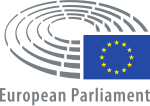History

The provisional arrangement was reiterated on 8 April 1965 with the Decision on the provisional location of certain institutions and departments of the Communities. This was following the Merger Treaty, which combined the executives of the three Communities into a single institutional structure. However, with the merged executives, the Commission and most departments were grouped together in Brussels, rather than Luxembourg City. To compensate Luxembourg for the loss, the agreement granted a city the right to host a number of bodies, including the Secretariat of the Assembly (now of the Parliament). [2]
Despite the 1965 agreement, however, the Parliament's seat was a source of contention. Wishing to be closer to the activities in Brussels and Luxembourg City, a few plenary sessions were held by the Parliament between 1967 and 1981 in Luxembourg instead of Strasbourg – against the wishes of France and in 1981 it returned to holding sessions entirely in Strasbourg. [2]



